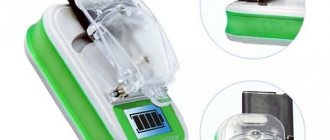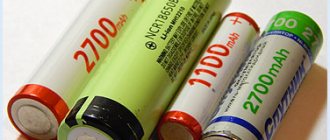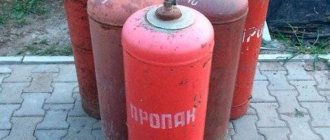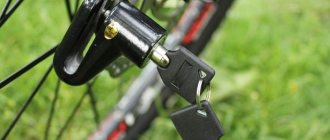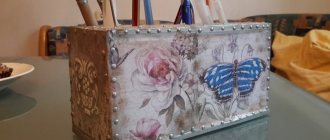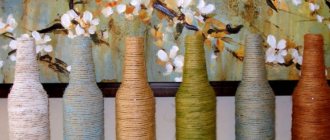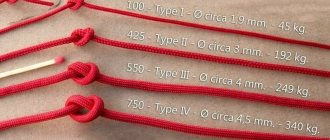Hello everyone, dear numerous car enthusiasts and part-time readers of our blog! Continuing our series of works devoted to caring for the body, headlights, and windows of a vehicle, I would like to dwell on one more popular request: How to make car polish with your own hands? It's no secret that modern auto chemicals can be very expensive. Therefore, it is not surprising that many car owners strive to save money. Well, some people just like to do everything for the car with their own hands. So this article is for all of them.
GOI paste: what is green mass?
The name stands for: State Optical Institute. This is where this cleaning material was created in the 30s. last century. It looks like a greenish mass, sold in the form of a smooth block and in a sealed jar.
Composition of the cleaning product
The main component in the composition is chromium oxide. The grain size of the preparation and its characteristics directly depend on its concentration. The higher the percentage of chromium oxide, the rougher the composition (variation can be from 60 to 85%).
Important! The green mixture is harmless to humans due to the fact that 3-valent chromium oxide is used in its creation, and only 6-valent chromium oxide is harmful. However, it is recommended to wear safety glasses and a mask when working, because when using it, dust appears that irritates the human mucous membranes.
Pasta varieties differ in grain size. Each of them is given a special number:
- No. 4 - rude. It contains: chromium oxide - 81%, stearin - 10, fat - 5, kerosene - 2, silica gel - 2. Light green tint, best scrapes the top layer of the material. Cleans out large scratches left after using other abrasives.
- No. 3 - average. Chromium oxide - 76 parts, fats - 10, stearin - 10, kerosene - 10, silica gel - 2. Pure green hue. Cleans out minor irregularities and scratches and gives the material a matte finish.
- No. 2 - thin. Chromium oxide - 74 parts, stearin - 10, fat - 10, oleic acid - 2.8, kerosene - 2, silica gel - 1, baking soda - 0.2. This composition is characterized by a dark green color. Used for polishing most products.
- No. 1 - thin. Nitric oxide - 65-70%, stearin - 10, fat - 10, kerosene - 10, silica gel - 1.8, soda - 0.2. It is distinguished by a dark color with a tint of green. Goi pastes 1 and 2 are designed for grinding or final finishing of the material, and give it shine and shine.
Important! The most common composition is GOI paste No. 2. It is ideal for products made of precious and non-ferrous metals, as well as glass and plastic.
Dried green mixture can be "reanimated" so that it becomes soft again. This is done using machine oil. Add 3-4 drops of machine or any other technical oil to a small piece, ground into fine crumbs. Place in the microwave for 30 seconds and grind the ingredients into a homogeneous mass.
Differences between grinding and polishing
Grinding is the leveling of a hard surface using abrasives.
Polishing – maximum smoothing of the surface until it becomes shiny.
These are not the same procedures. It is important to distinguish them. The difference lies in the purpose of these procedures. When working with hard surfaces, grinding and polishing are carried out one after the other.
The first thing you need to do is sanding. It will smooth out all the unevenness, remove excess layers, and help adjust the size and shape of the product if necessary.
Polishing is done next. It is the final stage when working with different surfaces. With its help, final leveling is carried out, and also gives a glossy shine to the materials on which it is carried out.
GOI paste for cars
Over time, scratches appear on the car body, headlights and glass dim, which greatly impairs the driver’s visibility. It would be logical to carry out polishing from time to time in a car dealership or with your own hands. A proven green mixture will help you cope with your problems.
Sand or polish?
All car owners should understand the fundamental differences between these processes.
- Grinding is a rough method of applying abrasives, which, by scraping off the top layer, level the surface. Used when serious scratches are evident. After this, the canvas will become matte, and additional exposure to compounds with fine grains will be required.
- Polishing is the final stage after grinding. The goal is to add shine to the product using fine-grained products.
Interesting! To understand what kind of GOI paste you will need for polishing or grinding the body, evaluate the condition of the car. To do this, run your fingernail over it. If it clings to a scratch, then the body will need grinding No. 3, and if not, then impact No. 2 or No. 1 will do.
Features of grinding different parts of a car
To polish the windshield, headlights or mirrors, use flannel, and felt is suitable for the body. The polishing paste is used as follows:
For glasses and headlights:
- Initially, wash the glass with water and shampoo, glass cleaner or alcohol, and wipe dry. This will enhance the effect.
- Polishing glass or headlights from scratches should be done with a special machine with a grinding wheel or a drill with a felt attachment. Manual work will only remove the dullness.
- Mix the green mass with machine oil at the rate of: a drop of oil per spoon of goya. Apply the mixture to the flannel pad of a polishing machine. Carefully treat the desired areas or, if desired, the entire glass.
- The direction of movement can be any, but the principle of lane overlap is encouraged.
- Periodically remove any remaining GOI with a paper towel and evaluate the result. Finish only when the area is perfectly smooth.
Important! If you are working on a specific area, then the surrounding area should be covered with plastic wrap so that you do not have to wash the entire car later.
- It is better not to grind excessively deep scratches, but to fill them with a special colorless compound.
Important! For glass, use only a thin mixture No. 1 or 2. Monitor the temperature of the glass, otherwise it will overheat and crack during the cleaning process.
For the body:
- To remove dullness from the body, clean the surface with a glass cleaner and wet it with water.
- Apply the paste to the circle of the car, wait until it accelerates to a speed of 1100 revolutions, and, without stopping, move across the area, maintaining an angle between the circle of the car and the body of 4-6 degrees.
- Remove any remaining drug with warm water under low pressure.
Video: Polishing a car with GOI paste
Proper application
Before you start polishing the car, the body must be thoroughly washed. After drying, the area to be treated will need to be degreased; white spirit is perfect for this. Before applying a new polish, you need to remove the remnants of the previous composition, this will allow the product to better adhere. It is best to carry out manipulations outdoors, so that the weather is dry. It is advisable to have a small canopy, which will serve as excellent protection from dirt and dust particles, as well as the rays of the sun. You can carry out the procedure in the garage, but only if it has good lighting and ventilation.
Share:
Cleaning products using GOI depending on the material
The use of polishing compound depends on the type of material.
General principles of cleaning with GOI paste
Polishing the surface at home is easy. It is only important to follow the general advice and not spoil the fabric being processed. The product is used in the following sequence:
- To prevent scratches on the surface, take a piece of rag and soak it in gasoline.
- It is necessary to spread a little green mixture on a rag and wipe it on an unnecessary object made of metal or glass. This will cause excessively large crystals to disintegrate.
- Rub the desired area with light movements without pressure until the body becomes shiny. This treatment will only take 3-4 minutes. It is only important not to scratch the treated area with large particles.
- After finishing the processing, you need to walk over the sanded object one more time with gasoline or immerse the entire product in kerosene.
Metal processing with GOI paste
Before using GOI paste, it is important to decide on the type of metal. For example, silver cutlery (knives, spoons, forks) turns green over the years and requires high-quality cleaning. In order not to accidentally spoil expensive material with roughness and scratches, perform cleaning according to the following scheme, variety No. 3:
- Wash all necessary silver utensils under running water.
- Rub with a soft toothbrush and detergent.
- Separately, pour a glass of water into the saucepan, adding a spoonful of ammonia, a pinch of laundry soap and a whisper of washing powder.
- Boil the appliances in this composition.
- Rub a piece of felt with a bar of paste and treat the utensils. Then take a softer cloth and sand each spoon for a few minutes.
Read more about other silver cleaning methods here.
- Speaking of other metals, goyi is used with great success for knives, drills and other tools. Cleaning of metals is carried out according to the above scheme.
- To polish a watch, you must first remove the watch mechanism.
- Gold is cleaned with flannel or a piece of leather with mixture No. 1 applied. Try to apply without pressure so as not to damage the soft precious metal.
Important! Remember to always apply polish to a cloth or sanding wheel, not to the workpiece. This will prevent unsightly scratches from appearing.
Article on the topic: Methods for cleaning gold.
Video: Cleaning a coin with GOI paste
Processing your phone or tablet screen
To polish the screen of a mobile phone or tablet, you need composition No. 2 and a flannel rag.
Cleaning involves the following steps:
- Apply a thin layer of the green preparation to the flannel.
- Pre-rub any unwanted metal or glass surface with it to remove abrasives.
- Rub the display with light movements without pressure for 5 minutes, be careful when working with a fragile product.
- Remove any remaining product with a clean, dry cloth. The screen will be rubbed until it shines.
Important! The product for plastic is used in the same way as for glass.
Description of the polishing process
To grind a metal surface you will need: laps and several tubes of diamond mixture with different grits. Diamond paste is evenly distributed over the working surface of a rag or other material. Experts have noticed an interesting pattern that makes it possible to improve the quality of metal processing.
Sanding metal parts
It turns out that you need to add castor or olive oil to the polishing substance. The ideal ratio is considered to be a mixture consisting of 40% diamond dust and 60% oil. After dilution, the mixture is immediately applied to the metal surface.
Related abrasive tools and grinding methods
Experts recommend starting to work only with large grains, gradually moving on to abrasives. During processing, make sure that no unnecessary elements get into the mixture - dust, sawdust, hair or pieces of rags. The presence of foreign objects greatly impairs the polishing to a shine. It is also recommended to wash your hands after changing from one grit to another.
For what materials is GOI paste not suitable?
Do not forget that polishing even with such a miracle drug causes irreparable damage to some materials. It is not recommended to influence:
- gilding (risk of erasing the top layer);
- steel and nickel (except for scissors and knives);
- sapphire glass from a watch (the procedure is ineffective).
Have you used GOI at home? What advice would you give to readers? Write about your impressions in the comments below.
